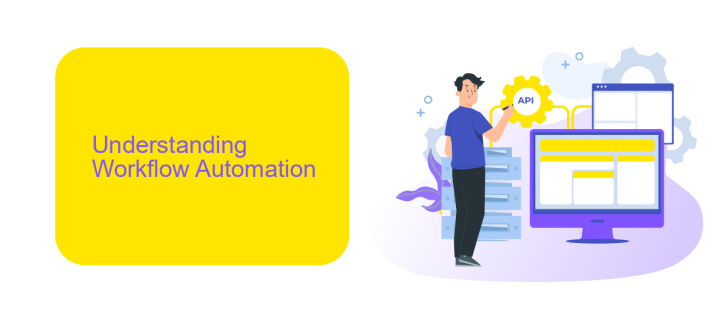Telecommunication Project Workflow Automation
In today's fast-paced digital landscape, telecommunication projects demand efficiency and precision. Workflow automation emerges as a critical solution, streamlining processes, reducing human error, and enhancing productivity. This article explores the transformative impact of automation on telecommunication project workflows, highlighting key benefits, implementation strategies, and real-world examples to illustrate how automation can revolutionize project management in the telecom industry.
Introduction
The rapid evolution of telecommunication technologies necessitates efficient project management workflows to ensure timely and successful project completion. Automation in telecommunication project workflows can significantly enhance productivity, reduce errors, and streamline operations. By leveraging advanced tools and services, teams can focus more on strategic tasks rather than repetitive manual processes.
- Improved efficiency through automated task management
- Enhanced accuracy with reduced human error
- Streamlined communication and collaboration
- Better resource allocation and utilization
- Increased scalability of projects
One such tool that facilitates workflow automation is ApiX-Drive. This service allows seamless integration of various applications and systems, enabling the automatic transfer of data and synchronization of tasks. By using ApiX-Drive, telecommunication projects can achieve higher levels of efficiency and coordination, ensuring that all components work harmoniously towards the project goals. Ultimately, workflow automation in telecommunications not only saves time and resources but also enhances overall project outcomes.
Understanding Workflow Automation

Workflow automation in telecommunications involves streamlining various processes to enhance efficiency, reduce manual labor, and minimize errors. By automating repetitive tasks, teams can focus on more strategic activities, thereby improving overall productivity. Automation tools can manage everything from task assignments to data entry, ensuring that each step in the workflow is executed seamlessly and consistently.
One effective way to achieve workflow automation is through integration platforms like ApiX-Drive. This service enables seamless connections between different applications and systems, automating data transfer and synchronizing various processes. With ApiX-Drive, telecommunications projects can benefit from real-time data updates, improved communication, and reduced operational bottlenecks. By integrating various tools and services, teams can create a cohesive and efficient workflow that adapts to the dynamic needs of the telecommunications industry.
Benefits of Workflow Automation in Telecommunications

Workflow automation in telecommunications offers numerous advantages, streamlining operations and enhancing overall efficiency. By automating repetitive tasks, companies can focus on strategic initiatives, reducing manual errors and saving valuable time.
- Increased Productivity: Automation tools can handle routine tasks, freeing up employees to focus on higher-value activities.
- Cost Reduction: By minimizing manual intervention, companies can significantly cut operational costs.
- Improved Accuracy: Automation reduces the risk of human error, ensuring more reliable outcomes.
- Enhanced Scalability: Automated workflows can easily adapt to growing demands without compromising performance.
- Better Resource Management: Efficient allocation of resources leads to optimized operations and improved service delivery.
Integrating various systems and applications is crucial for seamless operations. Services like ApiX-Drive facilitate this by enabling easy integration of different platforms, ensuring smooth data flow and enhanced collaboration. In conclusion, workflow automation is a game-changer for telecommunications, driving efficiency, reducing costs, and improving overall service quality.
Key Considerations for Implementing Workflow Automation

When implementing workflow automation in a telecommunication project, it is crucial to consider several key factors to ensure a seamless and efficient transition. The first step is to thoroughly analyze the existing workflows to identify repetitive and time-consuming tasks that can benefit from automation.
Once the workflows are mapped out, selecting the right automation tools becomes essential. Tools like ApiX-Drive can significantly streamline this process by providing easy integration with various platforms, enabling smooth data transfer and communication between systems.
- Identify and prioritize tasks suitable for automation
- Choose compatible automation tools like ApiX-Drive for integration
- Ensure data security and compliance with industry standards
- Train staff and provide ongoing support
Finally, it is important to continuously monitor and evaluate the automated workflows to ensure they are delivering the expected benefits. Regular updates and adjustments may be necessary to keep the system aligned with evolving project needs and technological advancements.
Conclusion
The implementation of workflow automation in telecommunication projects significantly enhances efficiency and reduces the likelihood of human error. By automating repetitive tasks, teams can focus on more strategic activities, leading to improved project outcomes and faster delivery times. Automation tools, such as ApiX-Drive, facilitate seamless integration between various platforms, ensuring that data flows smoothly across different systems and reducing the need for manual data entry.
Moreover, the use of such automation services allows for better resource allocation and real-time monitoring, which are crucial for maintaining project timelines and budgets. The ability to quickly adapt to changes and streamline processes ensures that telecommunication projects remain agile and responsive to market demands. In conclusion, adopting workflow automation is a strategic move that can drive significant improvements in project management and operational efficiency within the telecommunications industry.
FAQ
What is Telecommunication Project Workflow Automation?
How can automation benefit telecommunication projects?
What types of tasks can be automated in telecommunication projects?
How can we integrate different tools and systems for automation in telecommunication projects?
Is it difficult to implement workflow automation in telecommunication projects?
Apix-Drive will help optimize business processes, save you from a lot of routine tasks and unnecessary costs for automation, attracting additional specialists. Try setting up a free test connection with ApiX-Drive and see for yourself. Now you have to think about where to invest the freed time and money!

